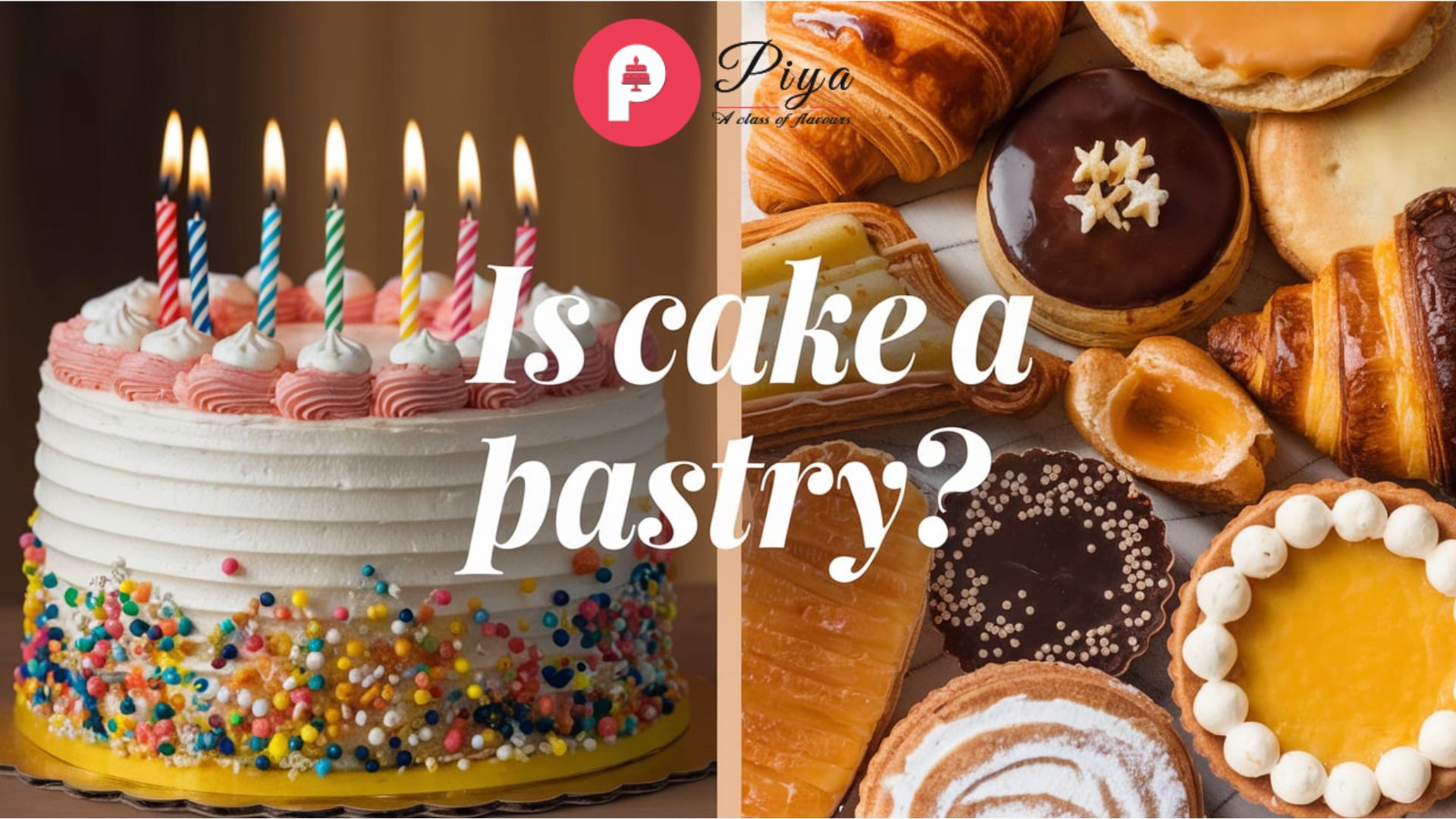When we talk about cakes, two words come to mind: cake and pastry. Both these items are loved and eaten by people almost all over the world, yet they stand out in discussion because of the ingredients, texture, and preparation. Most people doubt, “Is cake a pastry?”
Desserts are generally soft, light, and sweet. Therefore, even when a dessert like ice cream or mousse is ordered it is very common to see a portion of cake automatically added in advance. They are made from simple ingredients such as flour, sugar, eggs, butter, or oil and leavened using baking powder. There are various categories of cakes, such as sponge cake, butter cake, chocolate cake, etc.
Pastries are known primarily for crumbling and crispness. They are also prepared from flour and fats; water is added to make the product richer and less ordinary. Pastries are mostly sweet, except for a few that can be used in savory dishes, like puff pastry, shortcrust, and choux pastry.
What Is Cake?
The cake is sweet and generally baked very soft, fluffy, and moist. The cake is the best dessert for a treat that contains very few ingredients such as
- Flour: Flour provides the base for most cakes, and the most commonly used flour is cake flour.
- Sugar: Sugar gives the cake a sweet taste by making it tender.
- Eggs: Eggs are very easy to work with for making a cake they provide moisture and texture to the base.
- Butter: Because of butter, the cake gets richness and taste and it makes it soft and gives it a creamier feel.
- Baking Powder or Baking Soda: Due to these, carbon dioxide gas is liberated which makes the cake lighter or airier and spongy.
- Liquids: Liquids like milk or water add moisture to the content as well.
Types Of Cakes
- Chocolate Cake: Moist and rich in chocolate made with cocoa or melted chocolate layered with chocolate frosting.
- Vanilla Cake: Classic, light cake filled with vanilla extract, perfect for every occasion, and pairs well with various frostings.
- Red Velvet Cake: Attracting red-hued cake with a hint of cocoa and topped with cream cheese frosting for a tangy contrast.
- Fruit Cake: Dense cake packed with dried fruits and nuts often soaked in alcohol. It becomes popular during holidays.
- Surprise Cake: A cake filled with candies or treats that spill out when sliced, similar to a piñata cake. It is a great choice for children or if you want to gift something to your partner.
- Drip Cake: A cake with a glossy icing that drips down the sides, often decorated with toppings like fruits or sweets. One of the most liked cakes often served in ceremonies
What Is Pastry?
Pastry is a kind of dough that forms the basis of various baked products. In both sweet and savory customs the terms pastry have symbolized flakiness and tenderness for a pastry creation. The ingredients used for making pastry are:
- Flour: All-purpose flour is always the basic requirement of making pastry.
- Fat: To make pastry rich and flaky, it is most likely made using butter, shortening, or lard.
- Water: Water is majorly an asset in a bakery and binds the dough together.
- Salt: Salt improves the taste and strengthens the dough, thus enhancing its flexibility and allowing it to expand without breaking.
Types of Pastry
There are so many varieties of pastry that one cannot explain all nor even list them since each one is made for some special kind of purpose.
- Shortcrust puff: Shortcrust is a crumbly dough that is easy to prepare, and used for pies and tarts.
- Puff pastry: This is a handbook of thick laminations of dough and butter that is puffed during baking and thus used to create croissants and vol-au-vent.
- Choux pastry: It is the type of dough that puffs up in the oven. This is frequently used to make cream puffs, éclairs, or gougers.
- Filo pastry: Filo is a very thin unleavened dough used to form pastries. It is very fine and fluttery and is used mainly for a concoction of baklava.
- Water: Water is used to bind the dough together and it is a major asset in the bakery.
- Salt: Salt adds flavor to the dough and also reinforces the dough, thus making it more strong and pliable which allows the dough to expand without breaking.
Cake vs. Pastry: Quick Comparison
Cake and Pastry are yummy but there are a few differences between these two:
1. Texture
Cake: Generally cakes are soft, moist, and spongy it is due to the leavening agents.
Pastry: Pastries are generally flaky and crispy due to the layering of dough and fat.
2. Ingredients
Cake: It mainly consists of flour, sugar, eggs and fat. It includes creaming butter and sugar, then cracking eggs into the mixture after which dry ingredients are added followed by baking.
Pastry: It basically requires cutting in fat into the flour and mixing these two into a dough which is later rolled.
3. Use
Cake: This is a dessert that is normally decorated with colors, candies, and frosts and is used to celebrate birthdays, anniversaries, and festivals like Janmashtami, etc.
Pastry: Pastry’s main purpose is to complement the flavor of the filling and provide a casing. Generally used to make pies, tarts, etc.
Common Misconceptions
Most people use the terms cake and pastry, and most people think both of them are the same thing. However, they couldn’t be more different. Cakes are soft in consistency and mostly sweet, as they come from a type of matter that balloons when baked. Pastries, on the other hand, constitute layers of flaky, crispy dough with butter mostly involved, but they may have either savory or sweet fillings.
1. All Sweet Baked Goods Are Cake
Many people think that if it is sweet then it is a cake. That is just a misconception; although éclairs and croissants are sweet baked goods, they are still far from being cakes due to their structure and way of making them.
2. Cakes Are Always Layered
Many layered cakes are frosted. Nevertheless, this is not true of all cakes. You can make simple sponge cakes or pound cakes as single layers with no frosting whatsoever.
Conclusion
Indeed, cake and pastry might just be two of the most striking bakeries products. They almost represent extremes from one end of the spectrum to the other. The cakes come soft and sweetish, fluffy, while pastries seem crusty and can be sweet or savory.
If you realize what makes a cake distinguishable from a pastry, you’ll appreciate each for what they are and decide on the right one for your next dessert or snack. Whether it is a slice of chocolate cake or a flaky pastry full of cream, both are yummy treats and have their place in the world of baked products. The next time you sink into that baked good you will know whether it’s cake or pastry.

